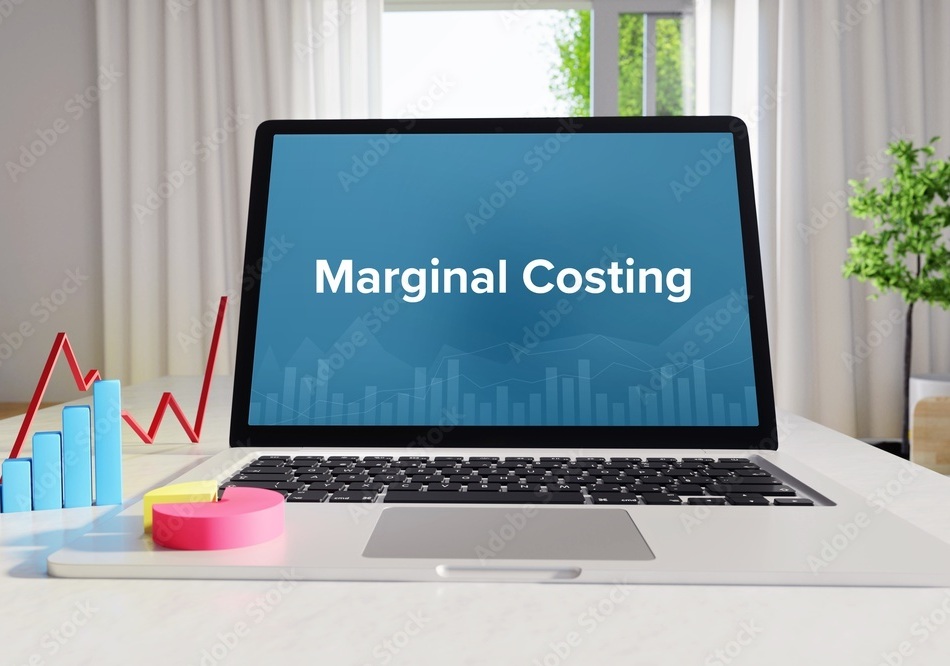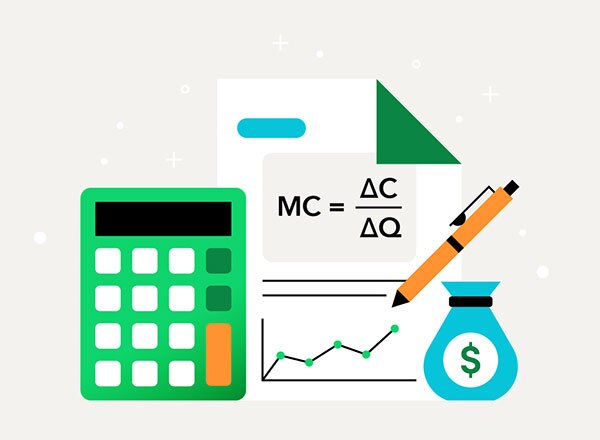Ways Marginal Revenue Related Marginal Cost Production
Feb 11, 2024 By Susan Kelly
The relationship between marginal revenue and the marginal cost of production helps businesses determine the point in time when they have maximized their profits to the greatest extent possible. This is done by determining the point at which the marginal revenue exceeds the marginal cost of production. The objective of this scenario is to have marginal revenue equal to marginal costs.
Calculating Marginal Cost of Production
The term "production costs" refers to any expenses incurred in producing a product or providing a service. They are divided into two categories: fixed and variable costs. A company's fixed costs are those expenses that remain essentially constant over time and are not proportional to the amount of product produced. They consist of general overhead expenditures like salary and wages, payments for the leasing of a building, or the cost of utilities. The cost of materials used in production or the cost of running gear used in the production process are examples of variable costs. Variable costs, on the other hand, are expenses that are directly tied to production levels and that fluctuate with those levels.
All the costs incurred to produce a product at the present level are included in the total production costs. To illustrate, a corporation that manufactures 150 widgets incurs expenses associated with manufacturing those 150 individual widgets. The cost of manufacturing one more unit is the measure of what is known as the marginal cost of production.
Reaching Optimum Production
When a corporation reaches the point when creating any more units will increase the cost to produce each unit, they have achieved what is known as their optimal production level. To put it another way, a rise in output results in an increase in both fixed and variable costs. Suppose a company's marginal cost of production is lower than average. In that case, it indicates that the company can maintain profitability while incurring lower fixed expenses at a given output level. If the marginal cost of production is high, then the cost of expanding production volume will also be high, and it is possible that it is not in the firm's best interests to increase output.

Calculating the Revenue on the Margin
The change in total revenue due to selling one more product unit is referred to as the marginal revenue. Assume that a corporation makes $100 throughout a certain period by selling widgets at a unit price of $10 each, selling an average of 10 widgets each month, and so on. As a result of widgets' rising popularity, the same firm can now offer 11 widgets for $10 each, resulting in a monthly income of $110. As a result, the incremental revenue generated by the eleventh widget is $10.
Balancing the Scales of Marginal Revenue
When there is a constant quantity of customer demand, the marginal revenue often goes down when there is an increase in output. In equilibrium, marginal income equals marginal expenses; no economic profit exists. In the actual world, market equilibrium is not something that ever exists; rather, markets merely move toward a continuously shifting equilibrium. As was the case with the previous example, an increase in marginal income may result from a change in customer needs that drives up the price of a product or service. When a corporation notices its predicted marginal income is beginning to decrease, it should investigate the root reason. The market reaching its saturation point or rivals engaging in price wars might be the spark.
If this is the case, the firm must make preparations by investing money in research and development (R&D) to continue providing innovative products in its product range. Suppose a company believes it cannot increase its marginal revenue once it is expected to decline. In that case, the management will need to look at its marginal revenue and the marginal cost of producing an additional unit of its good or service and plan on maintaining sales volume where they intersect.

Difference Between Marginal Revenue and Marginal Benefit
Even though they have a similar sound, marginal revenue and marginal benefit differ. It's the opposite of that. While marginal revenue measures the extra money a firm generates by selling one more unit of its item or service, marginal benefit measures the benefit that a customer receives from consuming an additional unit of a commodity or service. Both of these metrics are used in economics. To bring these two ideas together, let's consider once again the case of the widget-maker. Let's imagine a buyer is debating whether or not to purchase ten widgets. The marginal benefit for the customer would be $3.

Why knowing your Net Worth is Important?
By Susan Kelly / Nov 01, 2023
You can't improve what you don't measure. Track your net worth and make informed financial decisions.

All You Need to Know About Gross Margin: Definition, Example, Formula, and How to Calculate it
By Triston Martin / May 19, 2024
This article provides a detailed overview of gross margin, its example, formula, and how you can calculate it.

All About Recoverable Living Trust
By Triston Martin / Jan 24, 2024
Created throughout the Grantor's (the person establishing the trusts) lifetime, a Revocable Living Trust is a legal document that controls the trust assets for as long as the Grantor is alive.

How Royal Caribbean (RCL) Makes Money
By Susan Kelly / Feb 26, 2024
Cruise lines owned by Royal Caribbean International include RCI, Celebrity, and Silversea Cruises. The majority of the company's revenue is generated in the Asia/Pacific and North American regions.

High-Value Home Insurance
By Susan Kelly / Feb 04, 2024
The term "high-value home insurance" refers to a particular kind of homeowner's insurance made accessible for residences with a value of $750,000 or more.

The Comprehensive Guide to the Foreign Credit Insurance Association
By Triston Martin / May 19, 2024
Explore the FCIA's role in global trade through our comprehensive guide, covering services, application processes, and exporter support.

Explore All About Fairway Independent Mortgage
By Triston Martin / Feb 07, 2024
Want to take mortgage loans and wonder whether you should take them? Read more to know the Fairway Independent Mortgage review.

How to Get a Mortgage for a Rental Property
By Triston Martin / Oct 26, 2023
Secure your financial future by learning about the ins and outs of getting a mortgage for a rental property. Don't be intimidated; find out how here!

Brewing Rebellion: The Boston Tea Party After 250 Years
By Susan Kelly / Jan 17, 2024
Explore the historical significance, impact, and enduring legacy of the Boston Tea Party, a pivotal event in America's quest for independence.

Methods to Stay Away From the Payday Loans
By Triston Martin / Jan 17, 2024
If you’re confused about how to avoid a payday loan, then explore the modest methods you can use instead of payday.

A Comprehensive Overview of MarketBeat vs Seeking Alpha 2024
By Triston Martin / May 20, 2024
MarketBeat and Seeking Alpha offer stock ratings, analysis, and sophisticated screening tools. They modify their offerings to suit investors' needs.

Basis Points: Their Role in Financial Analysis:
By Triston Martin / Feb 05, 2024
Basis Points play a pivotal role in financial analysis, serving as a universal measure for changes in interest rates and other financial percentages. They provide investors with a precise, efficient way to track and compare differences in returns on various investments.